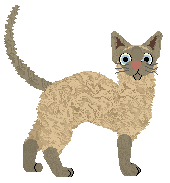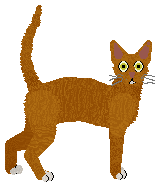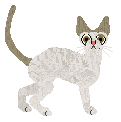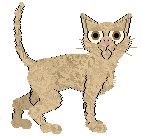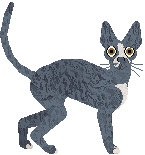Tabby: Any of the tabby combinations in any of the patterns, including golden tabby.
Torbie: Any of the torbie combinations of the allowed tabby combinations.
Colourpoint/Himalayan: Any of the above in a tabby colourpoint pattern.
Mink: Any of the above in a tabby mink combination.
Burmese: Any of the above in a tabby burmese combination.
White Patterns: Any of the above colours can come with or without
 in any amount.
in any amount.Any Other Variety (AOV)
Solid:











Tortoishell: Any of the tortoiseshell combinations.
Smoke/Shaded/Chinchilla: Any of the above listed colours in any of the patterns on a silver or golden base.
Colourpoint/Himalayan: Any of the colourpoint combinations. Tabby/torbie combinations fall under the Tabby variety.
Mink: Any of the mink combinations. Tabby/torbie combinations fall under the Tabby variety.
Burmese: Any of the burmese combinations. Tabby/torbie combinations fall under the Tabby variety.
White Patterns: Any of the above colours can come with or without
 in any amount.
in any amount.










